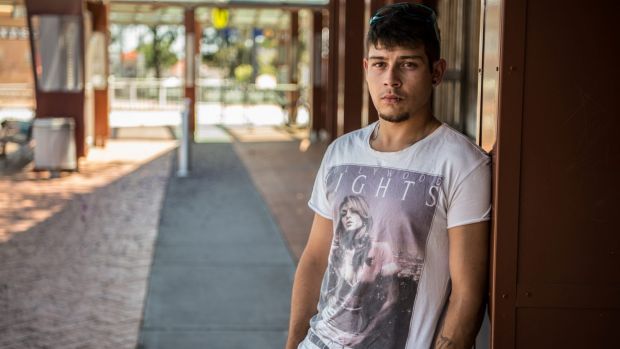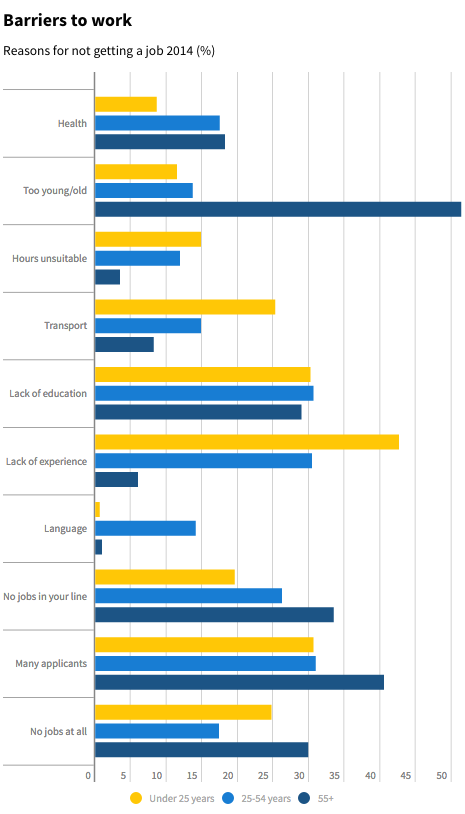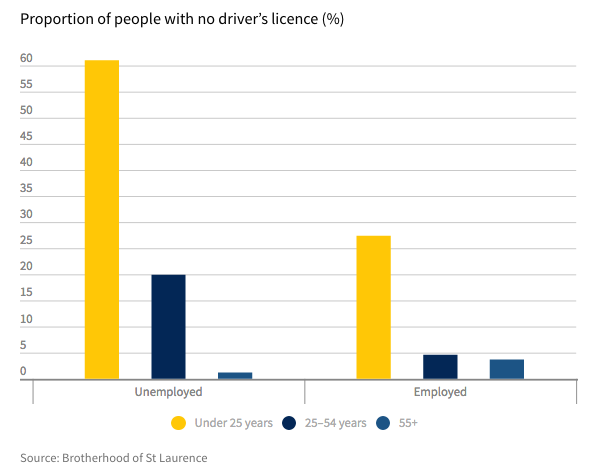Limited transport frustrating the young and unemployed
Reported in the SMH:
Two young job seekers living on the edges of Melbourne and Sydney talk about their difficulties travelling to job interviews.
Since losing his job at a sheet metal factory after a period of illness, Mr Cini, 19, has been virtually cut off from job opportunities.
“I’ve hada few jobs, but haven’t been able to keep them because of the problems I have getting there,” he said.
Not only are transport services patchy on the fringes of metropolitan Sydney, getting a driver’s licence appears to be the only solution. But this is also out of reach because Mr Cini doesn’t know anyone with time to supervise his driving to get his driver’s licence. In NSW, people on L plates are required to log 120 hours of supervised driving before they can sit a driver’s licence test.
Mr Cini, who receives about $280 per fortnight from Centrelink, cannot afford to take driving lessons, which can cost around $80.
“I’ve been getting lifts from friends, but that doesn’t get you far,” he said.
A new report released on Monday reveals limited public transport is a major barrier preventing young people from getting and keeping a job.
Youth unemployment is close to 13 per cent – double the national jobless rate – and is concentrated in regional areas and fast-growing outer suburbs which have some of the poorest public transport links.
Tony Nicholson, the executive director for the Brotherhood of St Laurence, which completed the report: U-Turn: The transport woes of Australia’s young jobseekers, said the greatest concentrations of unemployed young people are on the outskirts of major cities and in country areas where jobs are few. The bulk of job opportunities are hard to access in the cities.
The new analysis of the annual Household Labour Income and Family Dynamics in Australia (HILDA) survey of more than 13,000 people nationally shows 61 per cent of young people aged under 25 lacked a driver’s licence and up to a quarter cite transport issues as a key barrier to getting a job.
“The issue about transport to get young people connected to jobs is as critical as their training and education to match them to employers,” Mr Nicholson said.
“If they don’t have transport to look for work, then maintain it, their education and training counts for nothing. This hasn’t been given enough attention in strategies to tackle youth unemployment.”
Mr Nicholson said one of the most common complaints his agency has received from young people is a lack of transport.
“This research highlights the extent of the problem and the fact that if we are going to be successful in reducing youth unemployment we need to have a multi-pronged attack on it. One area that hasn’t been given enough attention is the transport challenge that is faced by young people,” he said.
Learner drivers need to log 120 hours of supervised driving in NSW and Victoria – a challenge for disadvantaged households with one adult driver or no vehicle. Mr Nicholson said the number of hours required were inconsistent across the country with only 50 hours of supervised driving required in Western Australia.
“There appears to be no universal standard,” he said. “If we are going to get better at getting young people into work, we have to revisit nationally the requirements for training for driver’s licences and the burden that falls unreasonably on more disadvantaged households in the outskirts of country areas.”
With more affordable housing to be found in outer suburbs and regional areas, youth unemployment, poverty and exclusion were becoming more highly concentrated there.
“Transport becomes a critical issue and it hasn’t been given enough attention in the strategy so far to tackle youth unemployment,” Mr Nicholson said.
While local councils had programs to help young people get driving licences, their availability depended on the supply of community volunteers to supervise driving lessons.
“I think we need a fundamental re-look at the way in which the burden of getting a driver’s licence is falling heavily upon disadvantaged households and young people in the outskirts of city and country areas,” Mr Nicholson said.
Read original story by Anna Patty in the Sydney Morning Herald here.


